To turn my comments above into an answer:
- You may always just plot all voxels as in
- The official example solves this problem by offsettingt the faces of the voxels by a bit, such they are all drawn.
- This matplotlib issue discusses the missing faces on internal cubes. There is a pull request which has some issues still and it hence not merged yet.
Despite the small issues, you may monkey patch the current status of the pull request into your code:
import numpy as np
import matplotlib.pyplot as plt
from mpl_toolkits.mplot3d import Axes3D, art3d # NOQA
from matplotlib.cbook import _backports
from collections import defaultdict
import types
def voxels(self, *args, **kwargs):
if len(args) >= 3:
# underscores indicate position only
def voxels(__x, __y, __z, filled, **kwargs):
return (__x, __y, __z), filled, kwargs
else:
def voxels(filled, **kwargs):
return None, filled, kwargs
xyz, filled, kwargs = voxels(*args, **kwargs)
# check dimensions
if filled.ndim != 3:
raise ValueError("Argument filled must be 3-dimensional")
size = np.array(filled.shape, dtype=np.intp)
# check xyz coordinates, which are one larger than the filled shape
coord_shape = tuple(size + 1)
if xyz is None:
x, y, z = np.indices(coord_shape)
else:
x, y, z = (_backports.broadcast_to(c, coord_shape) for c in xyz)
def _broadcast_color_arg(color, name):
if np.ndim(color) in (0, 1):
# single color, like "red" or [1, 0, 0]
return _backports.broadcast_to(
color, filled.shape + np.shape(color))
elif np.ndim(color) in (3, 4):
# 3D array of strings, or 4D array with last axis rgb
if np.shape(color)[:3] != filled.shape:
raise ValueError(
"When multidimensional, {} must match the shape of "
"filled".format(name))
return color
else:
raise ValueError("Invalid {} argument".format(name))
# intercept the facecolors, handling defaults and broacasting
facecolors = kwargs.pop('facecolors', None)
if facecolors is None:
facecolors = self._get_patches_for_fill.get_next_color()
facecolors = _broadcast_color_arg(facecolors, 'facecolors')
# broadcast but no default on edgecolors
edgecolors = kwargs.pop('edgecolors', None)
edgecolors = _broadcast_color_arg(edgecolors, 'edgecolors')
# include possibly occluded internal faces or not
internal_faces = kwargs.pop('internal_faces', False)
# always scale to the full array, even if the data is only in the center
self.auto_scale_xyz(x, y, z)
# points lying on corners of a square
square = np.array([
[0, 0, 0],
[0, 1, 0],
[1, 1, 0],
[1, 0, 0]
], dtype=np.intp)
voxel_faces = defaultdict(list)
def permutation_matrices(n):
""" Generator of cyclic permutation matices """
mat = np.eye(n, dtype=np.intp)
for i in range(n):
yield mat
mat = np.roll(mat, 1, axis=0)
for permute in permutation_matrices(3):
pc, qc, rc = permute.T.dot(size)
pinds = np.arange(pc)
qinds = np.arange(qc)
rinds = np.arange(rc)
square_rot = square.dot(permute.T)
for p in pinds:
for q in qinds:
p0 = permute.dot([p, q, 0])
i0 = tuple(p0)
if filled[i0]:
voxel_faces[i0].append(p0 + square_rot)
# draw middle faces
for r1, r2 in zip(rinds[:-1], rinds[1:]):
p1 = permute.dot([p, q, r1])
p2 = permute.dot([p, q, r2])
i1 = tuple(p1)
i2 = tuple(p2)
if filled[i1] and (internal_faces or not filled[i2]):
voxel_faces[i1].append(p2 + square_rot)
elif (internal_faces or not filled[i1]) and filled[i2]:
voxel_faces[i2].append(p2 + square_rot)
# draw upper faces
pk = permute.dot([p, q, rc-1])
pk2 = permute.dot([p, q, rc])
ik = tuple(pk)
if filled[ik]:
voxel_faces[ik].append(pk2 + square_rot)
# iterate over the faces, and generate a Poly3DCollection for each voxel
polygons = {}
for coord, faces_inds in voxel_faces.items():
# convert indices into 3D positions
if xyz is None:
faces = faces_inds
else:
faces = []
for face_inds in faces_inds:
ind = face_inds[:, 0], face_inds[:, 1], face_inds[:, 2]
face = np.empty(face_inds.shape)
face[:, 0] = x[ind]
face[:, 1] = y[ind]
face[:, 2] = z[ind]
faces.append(face)
poly = art3d.Poly3DCollection(faces,
facecolors=facecolors[coord],
edgecolors=edgecolors[coord],
**kwargs
)
self.add_collection3d(poly)
polygons[coord] = poly
return polygons
spatial_axes = [5, 5, 5]
filled = np.ones(spatial_axes, dtype=np.bool)
colors = np.empty(spatial_axes + [4], dtype=np.float32)
alpha = .5
colors[0] = [1, 0, 0, alpha]
colors[1] = [0, 1, 0, alpha]
colors[2] = [0, 0, 1, alpha]
colors[3] = [1, 1, 0, alpha]
colors[4] = [0, 1, 1, alpha]
# set all internal colors to black with alpha=1
colors[1:-1, 1:-1, 1:-1, 0:3] = 0
colors[1:-1, 1:-1, 1:-1, 3] = 1
fig = plt.figure()
ax = fig.add_subplot('111', projection='3d')
ax.voxels = types.MethodType(voxels, ax)
ax.voxels(filled, facecolors=colors, edgecolors='k',internal_faces=True)
fig = plt.figure()
ax = fig.add_subplot('111', projection='3d')
ax.voxels = types.MethodType(voxels, ax)
filled[-1] = False
ax.voxels(filled, facecolors=colors, edgecolors='k',internal_faces=True)
plt.show()

 I've been able to render voxels with transparency, but any voxel not on the surface seems to never be drawn.
I've been able to render voxels with transparency, but any voxel not on the surface seems to never be drawn. 

